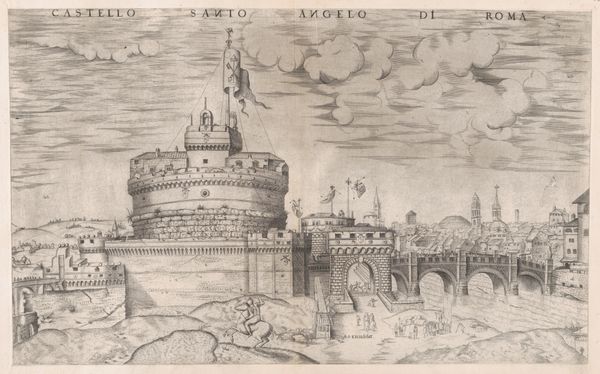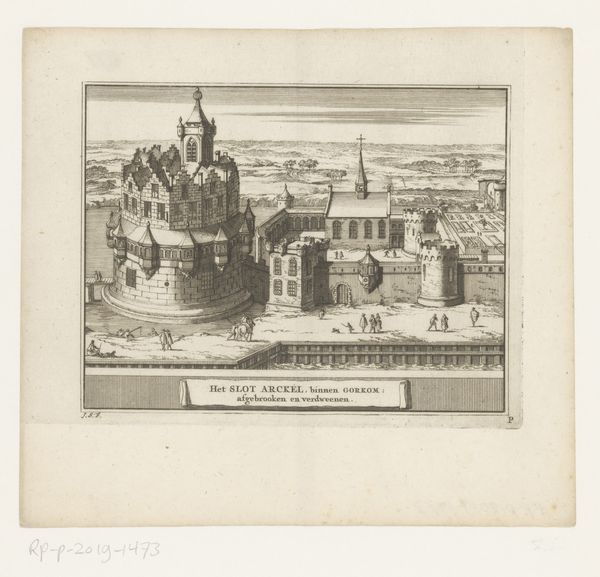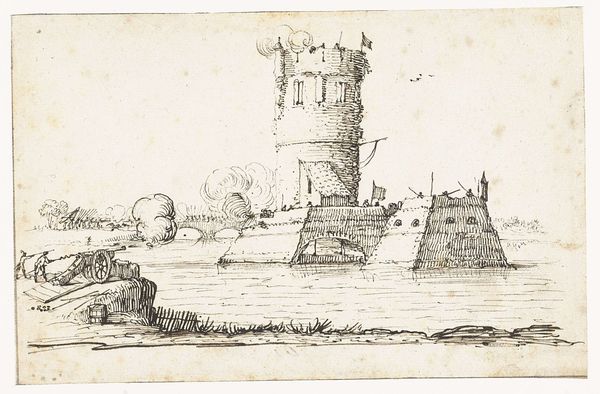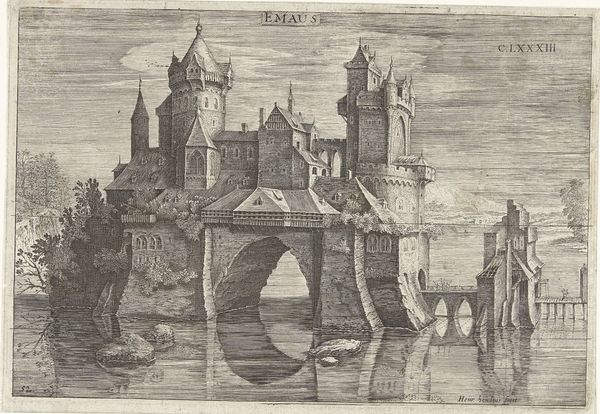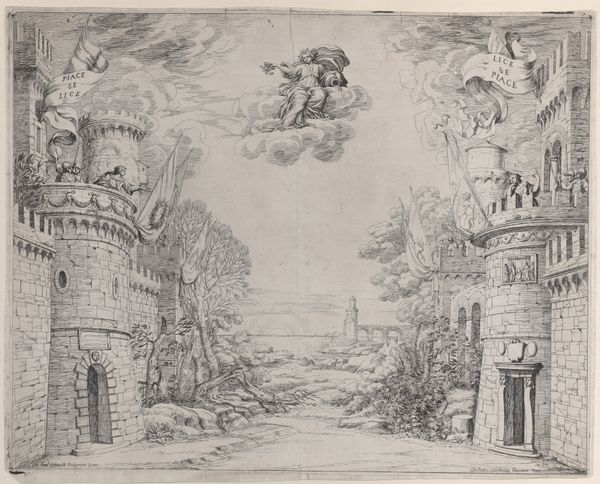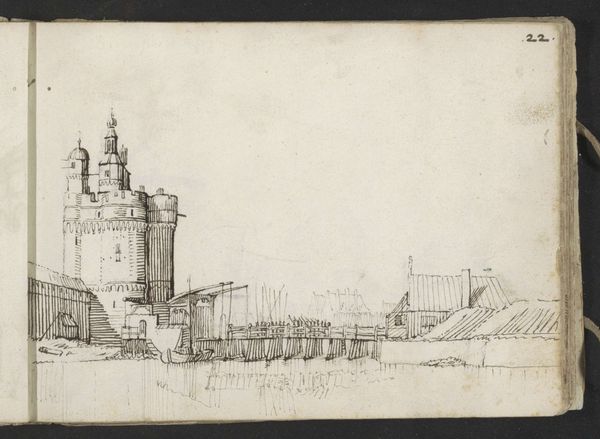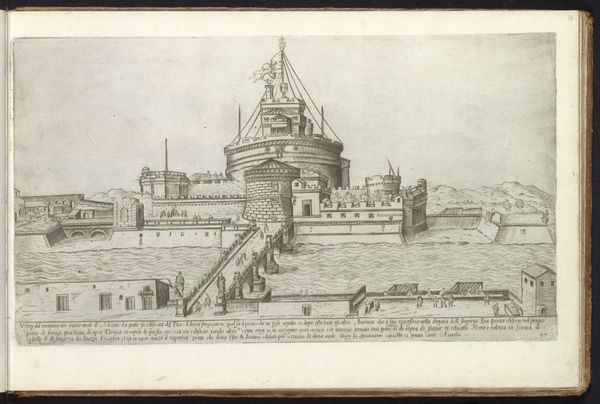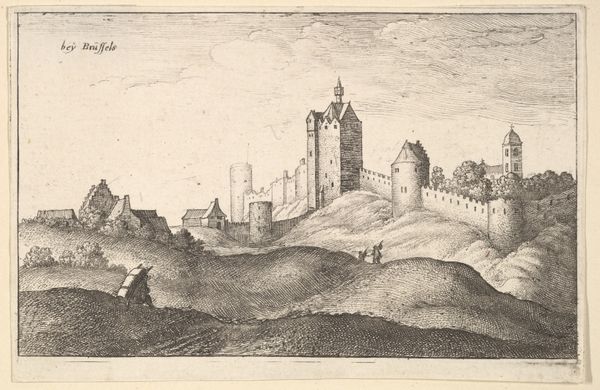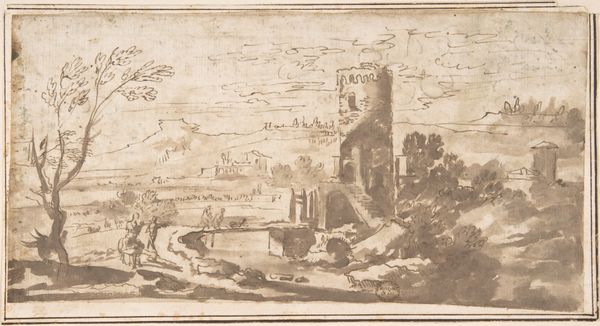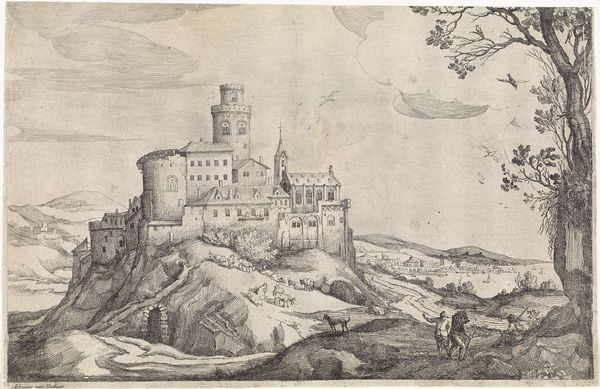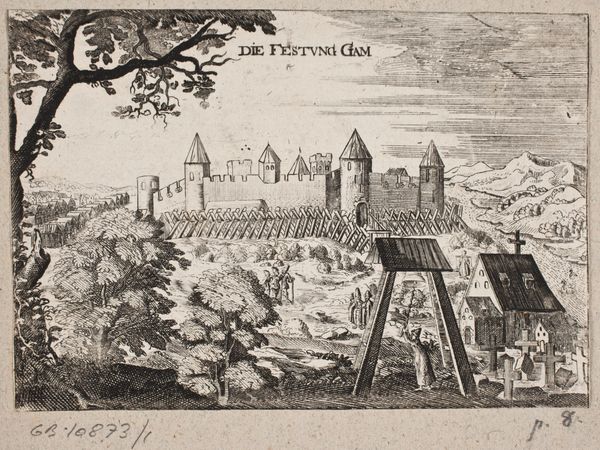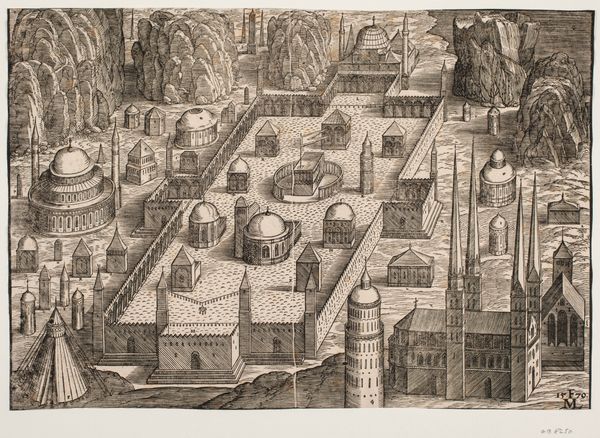
Speculum Romanae Magnificentiae: Castello Sant' Angelo 1530 - 1580
0:00
0:00
drawing, print, etching, engraving, architecture
#
drawing
# print
#
etching
#
cityscape
#
italian-renaissance
#
engraving
#
architecture
#
building
Dimensions: sheet: 18 3/16 x 22 1/16 in. (46.2 x 56 cm) plate: 11 5/8 x 19 11/16 in. (29.6 x 50 cm)
Copyright: Public Domain
Curator: At first glance, the overall scene feels both imposing and strangely weightless, all those precise lines defying the monumentality of the subject. Editor: Indeed. Here we have "Speculum Romanae Magnificentiae: Castello Sant' Angelo," created sometime between 1530 and 1580 by an anonymous artist. The print, currently housed at the Metropolitan Museum of Art, is a detailed rendering of the Castel Sant’Angelo, executed using etching and engraving techniques. Curator: What strikes me most is the incredible detail—the texture of the stone, the way the light catches the clouds, and the hustle of the crowds entering and exiting the city. Editor: As part of the Speculum Romanae Magnificentiae series, this print was likely intended to showcase the grandeur of Rome. The series played a role in shaping the image of the city for viewers across Europe. Curator: So, in a way, it’s early propaganda. And look at how the architecture is portrayed, not just as a physical space but almost as a stage for the theatre of city life. Editor: Precisely. Consider the historical context—the papacy's efforts to re-establish Rome as a cultural and political center after the sack of 1527. Prints like these served as powerful tools in this endeavor. They reminded everyone of Rome's enduring significance. Curator: You know, it’s strange. The perspective feels slightly…off. Like, the Castel Sant’Angelo dominates, but there’s something dreamlike and stylized about how the city spreads out behind it. Like a movie set that barely stays put. Editor: The artist prioritizes detail and symbolism over strict realism, reflecting the artistic conventions of the Italian Renaissance and its fascination with classical antiquity. Curator: Thinking about what the image tells us, beyond its historical accuracy, it really communicates something essential: Rome as an idea. Editor: Exactly. It captures not just a place, but a particular vision of power and cultural identity. Curator: This really shifted my understanding. What started as a city landscape became more a portal to an imagined past. Editor: Agreed. It serves as a fascinating example of how art intertwines with power.
Comments
No comments
Be the first to comment and join the conversation on the ultimate creative platform.
